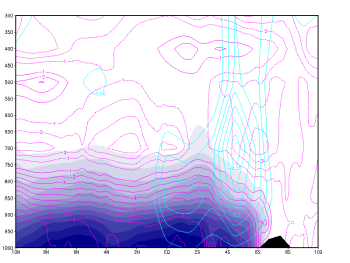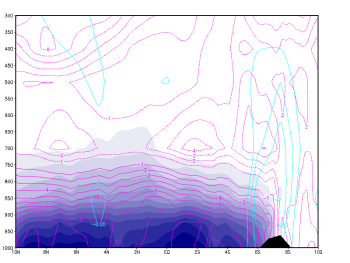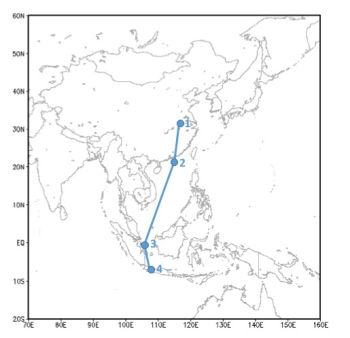Typical Appearance In Vertical Cross Sections
The following NWP parameters describe the vertical structure of the NCS.
-
Temperature:
Once the Siberian high intensifies over 1045 hPa, cold air is transported to the southeast.
-
Relative Humidity:
As an NCS propagates towards the equator, it collects moisture from the ocean via enhanced vertical moisture fluxes. Moisture convergence is enhanced in the SCS by the presence of the Borneo Vortex.
-
Meridional Wind (v):
The strengthened and persistent northerly flow near the surface enhances the diurnal cycle in Java Island and the surrounding areas. Due to its topography, Java acts as the southern boundary of this strong cross-equatorial flow.
-
Equivalent Potential Temperature (Θe):
Conditionally unstable atmosphere induced by the strong cross-equatorial flow can be seen in the vertical structure of Θe.
-
Meridional Moisture Transport (qv):
The strengthening of meridional transport of low-level moisture due to cross-equatorial flow during an NCS event enhances convection in the Java Sea. The resulting precipitation amounts are higher than the amount suggested by total precipitable water.
-
Vertical Motion (omega):
NCS affects the diurnal cycle in Java island. Vertical motion occurs at sea in nighttime, and during the day it occurs inland due to local topography.
Two examples are shown here. The one over the Atlantic Ocean with all the typical features of a cold front and the other over is a sub-tropical example typical of fronts over South Africa.
Diagonal Vertical Cross Section
|
Place of cross section
|
Temperature profile
|
Temperature profile from Siberia (45°N 92°E) to Northeast China (30°N 115°E) after NCS initiation.
color contour: Temperature (°C); grey shading: topography |
|
Meridional vertical cross section
|
Place of cross section
|
Relative Humidity and Vorticity
|
Comparison of NCS events, 30 January 2007 (left column) and NCS + Vortex, 18 January 2010 (right column). Lon: 113°E.
Shaded :RH; teal: vorticity |
|
Meridional Wind and Equivalent Potential Temperature
|
Place of cross section
|
|
Lon: 108°E. Meridional wind (m/s); black: Equivalent Potential Temperature (Θe, °C)
|
|
Meridional Moisture Transport and Vertical Motion
|
Lon. 108°E.
Cyan: vertical motion (pa/s); shaded: meridional moisture transport (g/kg*m/s), magenta: meridional wind (m/s). 31 Jan 2007, top: night time, bottom: day time |
|
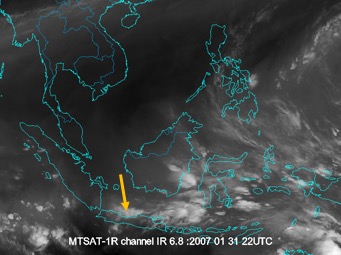
|
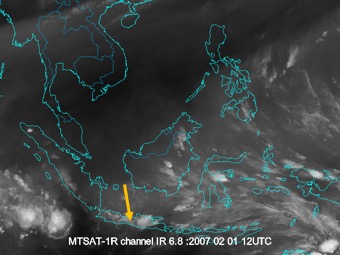
|
This animation shows a time-latitude cross section of the propagation of meridional track wind and relative humidity during an NCS event.
|
Cross section for the loop.
|
|

|
Press "Play Button" to see the loop; 25 Jan 2007/00 UTC - 09 Feb 2007/18 UTC Vertical Cross Sectio: Top: Along track Wind Speed (m/s); Bottom: Relative Humidity (%). |
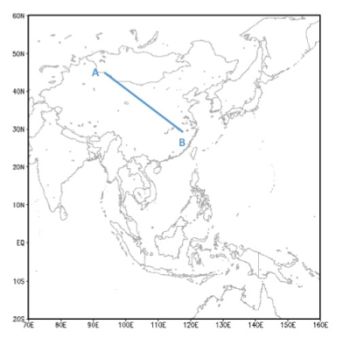
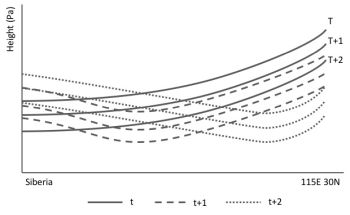
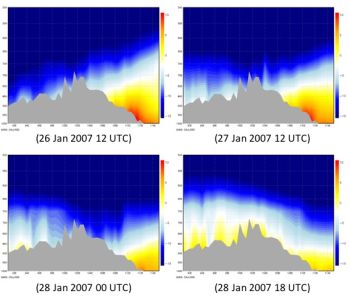
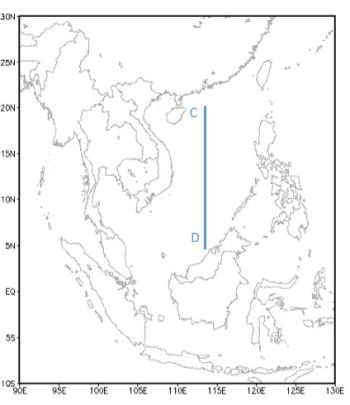
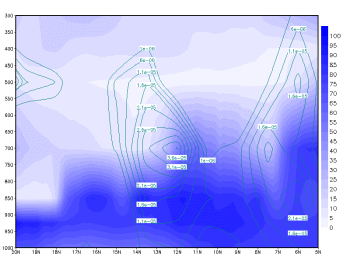
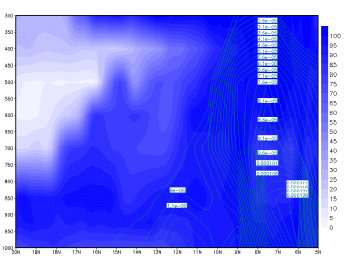
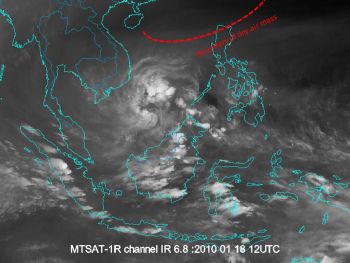
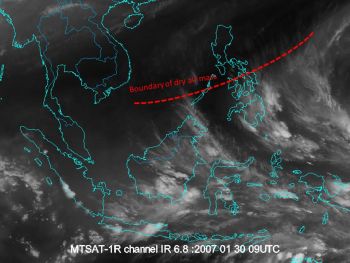
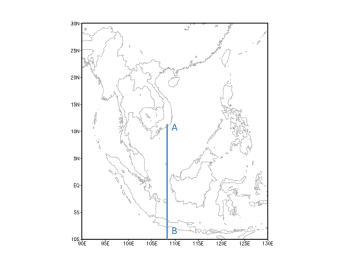
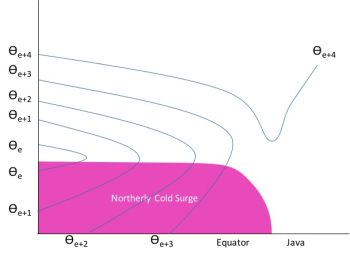
k.gif)

